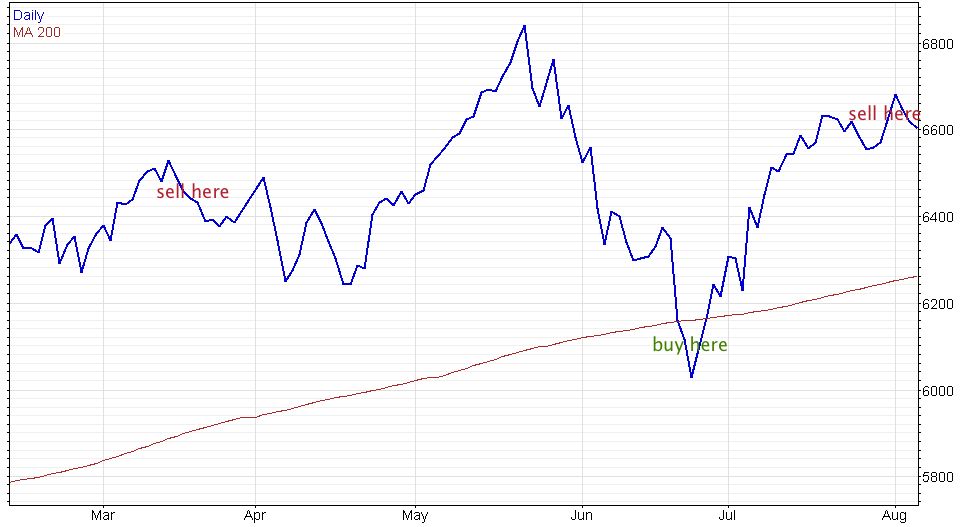Investment Theory
Investment managers tell investors it’s time not timing that is important. What they mean is get your money in early and leave it there for a very long time; Only then will you profit and be a wise investor. Of course the investment managers only earn money whilst you are invested in their funds, so they would say that anyway. Never, never, never try to decide when to go in and when to come out of a market. Because that is a mugs game and you will need a crystal ball.
What has happened over the last 6 months?
The graph above shows that over the last 6 months the FTSE100 has moved from around 6350 to 6600. That translates to a nice 3.9% return over the period thank you very much. Much better than the return from a bank deposit held for several years. But during this period the index has been both higher and lower.
How much could I have made with the benefit of a crystal ball?
Well if you started at 6350 and sold at 6850, then bought in again at 6050 and sold at 6650 you would have made over four times more at 17.8%! But could anybody have captured this higher return? I believe anybody who indeed made these investment calls is either cheating or just plain lucky beyond belief. So no it would be impossible.
Is there a way to try to capture more of this growth?
Well you won’t do it by just sitting fully invested in the market. The first thing to do is to believe that it is worth trying. Don’t believe what the “vested interests” say. We started to try in 2008 before the stockmarket collapsed and continue to try every day. We think the results as shown by these blogs and in the value of our clients accounts show conclusively that doing something is way better than doing nothing.
We reduced equity holdings and increased the amount of cash we hold in mid March.
We have just reduced our holdings by 50% again.
I recently came across a senior financial planners forum where the question was asked “With all the major stock markets at a multi-year high, is it still best practice to just invest fully straight away or should I phase the client’s investment into the markets?” My answer as always was “I bet you wouldn’t just invest it now if it was your own money!”
How have you done?
Well without the benefit of a crystal ball or safety net we took the view that it was overvalued on March 19th, cheap again by 21st June and overvalued again a few days ago on the 5th. (These points are shown in the graph above) It never makes sense to make an all or nothing decision because you only have a 50% chance of being right, so I decided to sell half of our clients equities, then buy them back, then sell half again. The result is with the 50% of the equities that we left alone the clients made the market return of 3.9% and with the other 50% that we traded they made 10.5% which makes a total average return for the period of 6.8%. Proof then that it is worth trying, but also proof that we don’t own a crystal ball.
This is one way our discretionary permissions are helping us to manage our clients’ accounts more efficiently.

